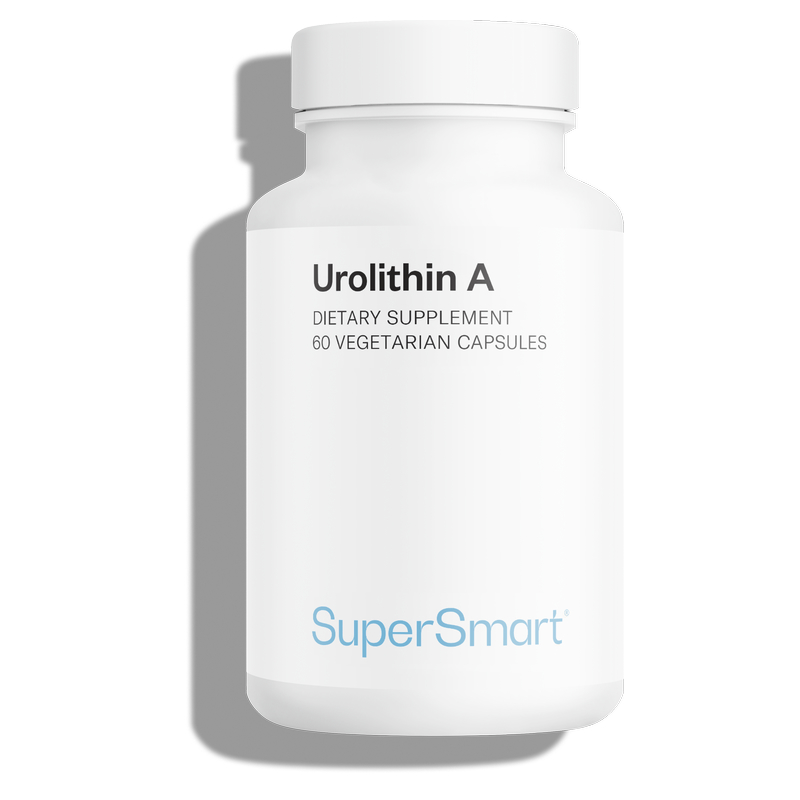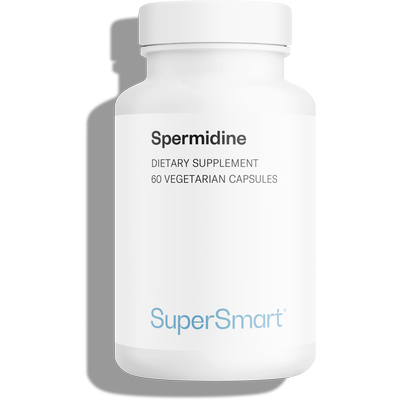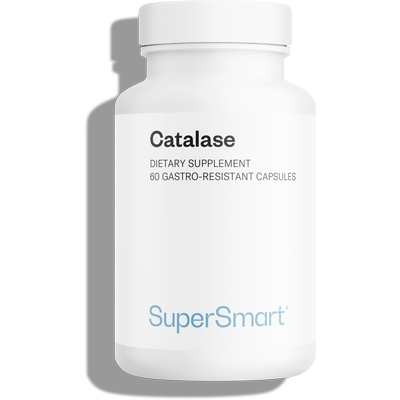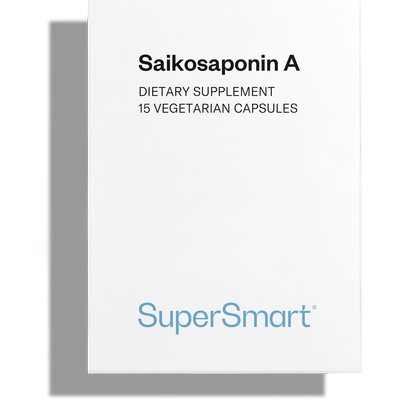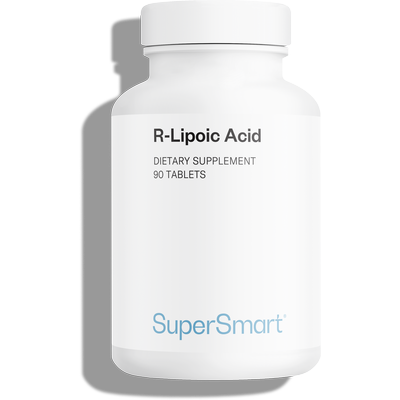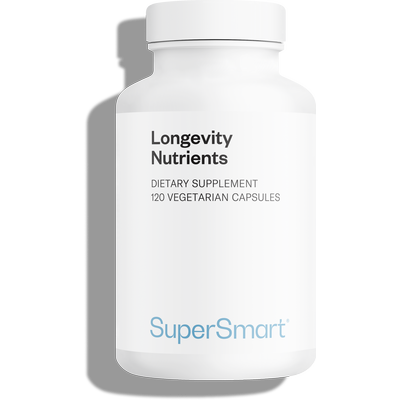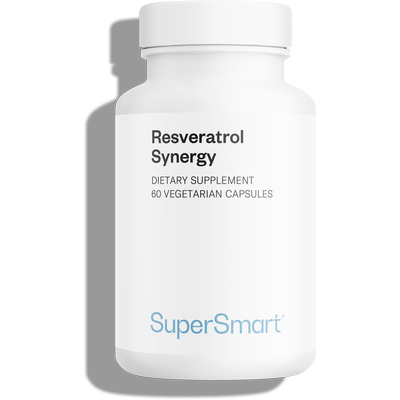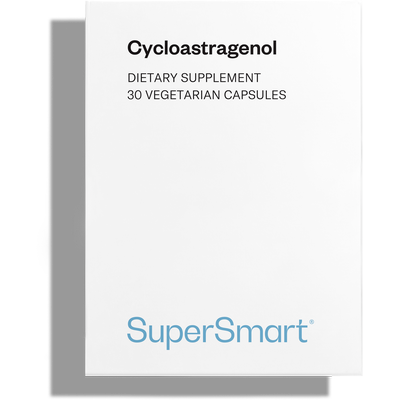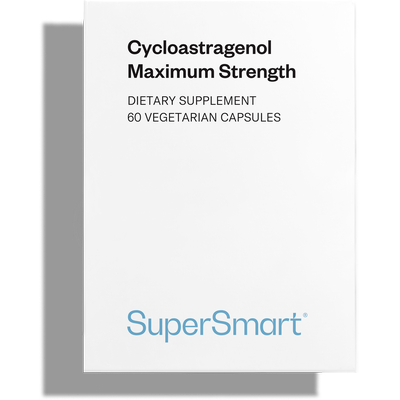Complete your selection
Urolithin A is a dietary supplement containing urolithin A, a metabolite studied in the fields of cellular health and anti-ageing.
This particularly innovative ingredient is attracting scientific interest because of its potential effects on mitochondrial and cellular function, and thus its ability to maintain young-looking skin and support overall longevity, etc. (1)
The supplement Urolithin A is part of our longevity product category.
Definition and benefits of urolithin A, a new ‘anti-ageing’ ingredient
What exactly is urolithin A?
Urolithin A is a metabolite produced naturally by the body from the conversion by gut bacteria of dietary ellagitannins and ellagic acid (it is often described as a postbiotic).
Ellagitannins and ellagic acid are found at low levels in fruits such as pomegranates, blackberries, nuts...
Promising health benefits of urolithin A
Urolithin A has been the subject of numerous studies investigating its potential to support:
- cellular health and longevity, by increasing mitophagy (namely the recycling of dysfunctional and/or senescent mitochondria), maintaining mitochondrial function and reducing harmful inflammation (2);
- the health and appearance of the skin, by increasing expression of type 1 collagen and exerting antioxidant effects (3);
- joint health, by reducing cartilage degeneration and synovial inflammation (4);
- brain health, by promoting blood-brain barrier permeability (5);
- muscle health, by supporting strength and recovery (6);
- and health and longevity in general (7-8).
As a reminder, mitochondria are responsible for producing ATP, the primary source of cellular energy which the body needs in order to function properly and survive.
Mitochondrial dysfunction plays a key role in the ageing process and subsequent development of age-related health problems (metabolic, degenerative...)
What are the benefits offered by urolithin A supplementation?
Taking a pure urolithin A supplement enables you to:
- easily and effectively increase the amount of urolithin A in your body;
- and to do so by side-stepping the stage of converting ellagitannins and ellagic acid into urolithin A in the gut. Indeed, this stage is not possible for everyone, as it is directly related to the individual health and composition of the gut microbiome. What’s more, the body’s natural ability to produce urolithin A from its precursors declines with age. This conversion process is therefore variable and is only possible in around 40% of older populations.
Six strengths of our urolithin A product
Our urolithin A supplement stands out from other ‘anti-ageing’ and similar products in 6 key facets:
- its exclusive and innovative aspect: while urolithin A is growing in popularity in the United States (the most advanced country in terms of supplement production and consumption), this cutting-edge supplement still represents a rare opportunity in the current market, especially in Europe;
- its unique performance: the results produced by urolithin A studies are some of the most promising in current anti-ageing research (9);
- its high but safe dose: our product provides at least 500mg urolithin A a day, a dose studies have shown to be effective and safe;
- its natural source: it contains only urolithin A obtained from pomegranate extract;
- its proven high quality: the metabolite obtained is rigorously tested to ensure optimal purity;
- its natural excipients: only acacia gum and white rice flour are used in our product, 100 % natural excipients which contribute to the supplement’s consistency and stability.
What is in Urolithin A
Any questions?
Our team of nutrition experts and scientists has the answers.
Mitophagy is an autophagic process through which a healthy-functioning body eliminates and recycles dysfunctional and senescent mitochondria from its cells.
When mitophagy ceases to function properly, it can lead to the accumulation of dysfunctional mitochondria, impair cellular health and promote the development of age-related health problems.
Scientists are therefore interested in urolithin A for its potential to induce mitophagy.
Besides taking a urolithin A supplement, you can increase your intake by ingesting the metabolite’s precursors: ellagitannins (bioactive polyphenols) and ellagic acid (an ellagitannin derivative).
Ellagitannins and ellagic acid can be digested and metabolised into A and B urolithin by gut microbiota bacteria, in the small intestine and colon.
However, supplementing directly with urolithin A avoids this somewhat unreliable conversion stage and allows you to benefit directly from substantial amounts of the ‘end product’ itself.
If, however, you’d prefer to consume ellagitannins and ellagic acid, there are a number of foods that contain them:
- pomegranates ;
- blackberries ;
- raspberries ;
- strawberries ;
- grapes ;
- red wine aged in oak barrels (to be drunk in moderation) ;
- walnuts ;
- pecan nuts, etc. (11)
In combination with your urolithin A supplementation, we’d recommend taking substances associated with mitochondria, such as pyrroloquinoline quinone (PQQ), R-lipoic acid and acetyl-L-carnitine. These can be found combined in certain synergistic formulations (such as the supplement Mitochondrial Formula).
Again related to cellular health, you could also benefit from compounds studied for their potential to suppress damaging senescent or ‘zombie’ cells that collect in the body over time. These potential natural ‘senolytics’ (senescent cell-eliminators) include fisetin (try the supplement Fisetin), quercetin, decaffeinated black tea, bromelain...
Scientists have identified urolithin A as a potentially powerful activator of the PINK1/parkin mitophagy pathway (PINK1 being a kinase-1 induced by PTEN, the phosphatase and tensin homolog).
This pathway leads to selective ubiquitination (the marking by ubiquitin molecules) of targeted mitochondrial proteins, and then to their elimination by phagolysosomes : the ‘tagged’ proteins are enclosed in phagosomes fused with lysosomes in order to be broken down by enzymes.
Urolithin A may also be able to activate several pathways independent of PINK1/parkin to eliminate defective mitochondria (10).
The increased interest in urolithin A capsules for promoting healthy ageing is supported by 2 key factors:
- advancing age can reduce our natural ability to produce urolithin A from its precursors;
- the gut microbiome has to have a specific composition in order for this conversion to take place.
A significant proportion of the population is therefore unable or ill-equipped to convert ellagitannins and ellagic acid into urolithin A, in order to prevent the accumulation of dysfunctional mitochondria. The only way such individuals can benefit from this active ingredient’s properties is to take a supplement.
december 26 2025
Buongiorno non saprei valutate questo prodotto. Non ho visto risultati tangibili a fine assunzione
december 7 2025
Légère amélioration musculaire d'une jambe accidentée
Slight muscle improvement of an injured leg
 see the translation
Translated by SuperSmart - see the original
see the translation
Translated by SuperSmart - see the original
november 13 2025
Très bon prix pour ce produit.
Very good price for this product.
 see the translation
Translated by SuperSmart - see the original
see the translation
Translated by SuperSmart - see the original
october 19 2025
Très bon service. Coût assez élevé. Je n’utilise le produit que depuis peu de temps et je ne sais pas au bout de combien de temps on peut juger les effets. Je vais pour l’instant continuer
Very good service. Quite high cost. I have only been using the product for a short time and I don't know how long it takes to judge the effects. For now, I will continue.
 see the translation
Translated by SuperSmart - see the original
see the translation
Translated by SuperSmart - see the original
may 16 2025
Need help?
You may also like
of experience
your money back
##montant## purchase

